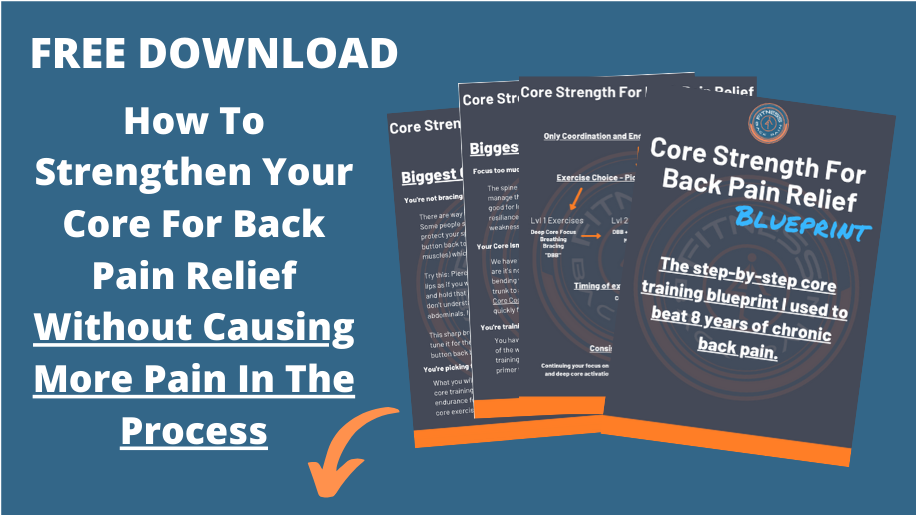Core And Flexibility Workout For Sciatica Pain | Herniated Disc Pain RELIEF!
You’re standing in line at the grocery store waiting to check out when you start to feel that burning/electric sensation creeping down your leg.
The clock is ticking, and if you don’t get to the car and sit down, your foot is going to be numb for the rest of the day.
Have you ever experienced that?
Maybe your sciatica symptoms kick in 15 minutes into washing the dishes or driving home from work.
As scary and painful as sciatica can be, it’s also something that can be reversed without narcotics or surgery.
If you’ve ruled out anything major by your trusted physician and you want to heal your sciatica more holistically, this is the exact workout you need to follow.
Today you’ll discover:
- The best order of flexibility to strength exercise ratio for fast sciatica relief
- The stupid simple 4 part routine that will erase your sciatica for good.
- My favorite Core Strength & Flexibility exercise in the world
Looking to build core strength without ruining your low back?
I made this FREE GIFT just for you:
How To Build Core Strength and Stability Without Making Your Back Pain Worse.
What Is Sciatica And Why Do I Have It?
Sciatica is a condition that causes pain, tingling, or numbness in the lower back, buttocks, and legs.
It’s usually caused by a problem with the sciatic nerve, which is a long nerve that runs from the lower back down each leg.
The most common cause of sciatica is when the sciatic nerve gets compressed or pinched.
This can happen for a few different reasons, such as a herniated or bulging disc in the spine, which can press on the nerve, or from a bone spur or narrowing of the spinal canal, which can also put pressure on the nerve.
Sometimes, sciatica can also be caused by muscle spasms or inflammation in the lower back.
The symptoms of sciatica can be uncomfortable and drive you crazy, but the good news is that it’s totally treatable.
Will Flexibility Help With Sciatica
Yes and no.
Having good flexibility in your hips can help with sciatica because tight hip muscles can put pressure on the sciatic nerve and make your symptoms worse.
When your hip muscles are flexible, it can help to relieve that pressure and reduce your pain and discomfort.
There’s another side to this coin.
Oftentimes, people chase these sciatica symptoms n with different stretches, which ends up just making the nerve even angrier.
So what you do needs to be strategic and intentional.
One way to improve flexibility in your hips is through stretching exercises. For example, you can try a seated or standing hip stretch, where you cross one ankle over the opposite knee and gently press down on the knee to stretch the hip muscles. You can also try a pigeon pose, which involves bringing one leg forward and bending it while keeping the other leg extended behind you, and then gently leaning forward to stretch the hip muscles.
In addition to stretching, incorporating other exercises like yoga, Pilates, or swimming can also help to improve hip flexibility and overall mobility. A physical therapist can also provide guidance on specific exercises that can be helpful for your individual needs and symptoms.
Remember, it’s important to listen to your body and not overdo it with stretching or exercise, especially if you’re experiencing pain or discomfort. Always talk to your doctor or a healthcare professional before starting a new exercise program or if you have any concerns about your symptoms.

